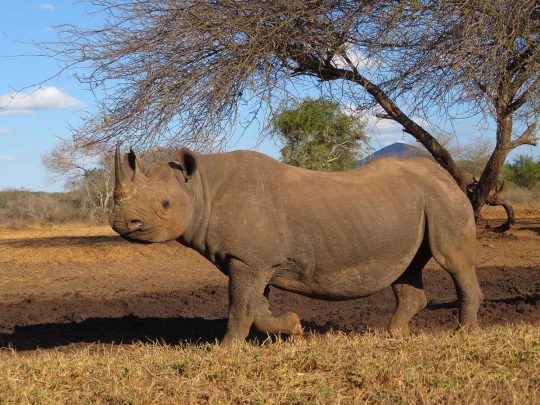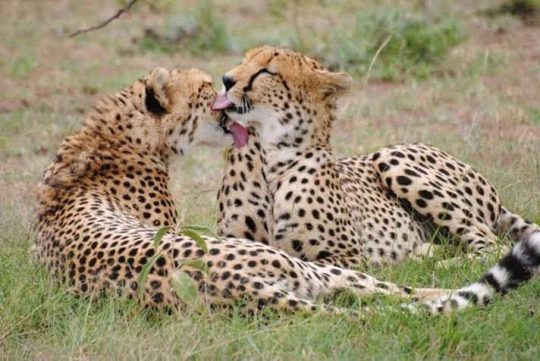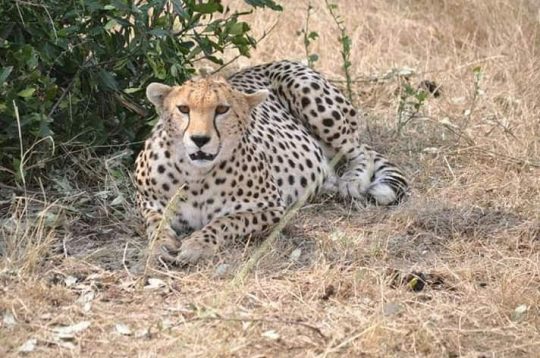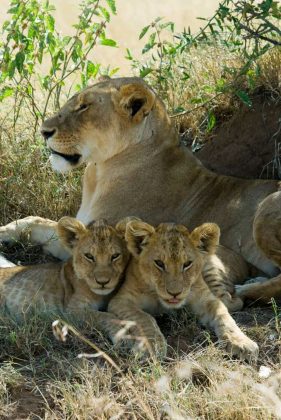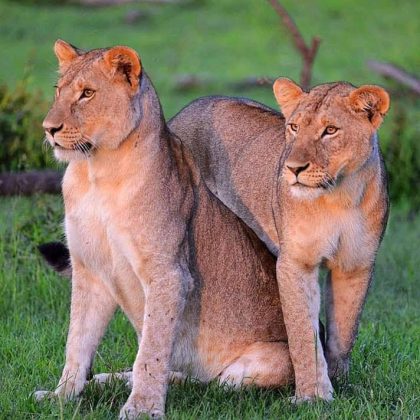Are you thinking to go visit Ol Pejeta?
Talk to our experts about the perfect planning for your holiday.
Error: Contact form not found.
- About Ol Pejeta
- Interesting facts about Ol Pejeta
- Best Time to Visit Ol Pejeta
- Things to do in Ol Pejeta
- How to get to Ol Pejeta
- Where to Stay in Ol Pejeta
- Weather & Climate
The primary objective of the Ol Pejeta Conservancy is to preserve the natural habitat and protect the wildlife, while also serving as a safe haven for great apes. Additionally, the conservancy aims to generate revenue through wildlife tourism activities.
About Kenya
Kenya is a country situated on the eastern coast of the African continent. With a varied geography and much of northeastern bush-covered plains, the rest of the country consist of pristine beaches, scenic highlands and lake regions, a good portion of the Great Rift Valley, and the magnificent Mount Kenya. Kenya is one of the finest, and possibly the most famous safari destination in the world. But safari by no means the only reason to visit Kenya, for the attractions of its rich culture and diverse environments are considerable.
About Ol Pejeta Conservancy
Ol Pejeta Conservancy is a 400 square kilometre wildlife sanctuary, located in the Laikipia region of Kenya, between the foothills of the Aberdares and Mount Kenya. Ol Pejeta is home to the largest population of black rhino in East Africa, and conversely, the last two northern white rhinos in the world.
In addition, Ol Pejeta has some of the highest predator densities yet still manages a successful livestock programme, a ground breaking model now being replicated by other conservancies across Africa.
If you liked Ol Pejeta Conservancy – Kenya, you might also like Mombasa – Kenya.
If you liked Ol Pejeta Conservancy – Kenya, please follow us on Instagram for more content like this.
- Excellent wildlife viewing including the Big Five
- Great sightings of black and white rhino
- Ol Pejeta is part of a bigger eco-system, ‘Laikipia Plateau’
- Many activities including night drives, lion tracking and walking
- Stunning views of Mount Kenya
- Only reserve in Laikipia allowing day visits
June to October are the best months to visit Ol Pejeta. This is the dry season, and generally the further into the dry season you are, the better the game viewing.
In November and December there is a short rainy season, but this is a very pretty time to visit as plants are in bloom, and it’s a good time to see migratory birds.
From January to March there is another dry season, and the flowers will be in bloom following the rains – this time of year makes for great photographs!
The long rainy season takes place in April and May. Ol Pejeta Bush Camp is closed in May due to the rains.
- Game Drives
- Endangered species enclosure
- Lion tracking
- Take a walk down the Ewaso Nyiro river, in search of hippos
- Walking safaris
- Visit the chimpanzee sanctuary
Hot to get to Ol Pejeta
The recommended port of entry, when travelling to Ol Pejeta, is Jomo Kenyatta International (NBO) in Nairobi. NBO Airport serves as East Africa’s biggest hub and as a result many convenient flight options are available. KLM Royal Dutch Airlines, Air France, British Airways, Emirates, Etihad Airways, Kenya Airways, Lufthansa, Qatar Airways and Swiss all operate flights from a multitude of major airports around the world. Also many regional flights options (including flights to neighbouring countries and Southern African destinations) are available.
The drive from Nairobi to Ol Pejeta takes about 3-4 hours. The road from Nairobi to Nanyuki is tarmacked and our main entry gate, Rongai gate is easily accessible from Nanyuki Town on a tar road, with the last 13 kilometers to Ol Pejeta on a graded dirt road.
Visitors can also enter via Serat Gate on the Rumuruti road.From Nakuru/ Naivasha; it is best to take the road via Nyahururu and Nyeri to enter Ol Pejeta through Nanyuki. About 6.5km after the Nanyuki airstrip, there is a sign to Ol Pejeta on the left, and it is signposted all the way to Rongai Gate.
If you would rather fly, there are daily scheduled flights from Nairobi Wilson Airport to Nanyuki airstrip (which is a 45-minute drive from Ol Pejeta). Air Kenya and Safarilink both offer services to Nanyuki from Nairobi. FLY SAX operates flights 3 times a week direct to Ol Pejeta’s Kamok Airstrip. All accommodation providers on Ol Pejeta can arrange a transfer to and from the airstrips. It is also possible to charter a flight from any other wildlife conservancy or airstrip, into Kamok.
Average daytime temperatures at Ol Pejeta don’t deviate much from 24°C/75°F, thanks to the nearness of the equator. That said, the park’s altitude lends it a distinct coolness, especially felt on early-morning game drives. There’s always the chance of rain during the Dry season (June to September). But this is guaranteed in the Wet season (October to May), particularly in the twin rainfall peaks of April and November.
Do you need expert tips on planning for your next safari in Africa?
Share your email here
[mc4wp_form id=”29279″]

